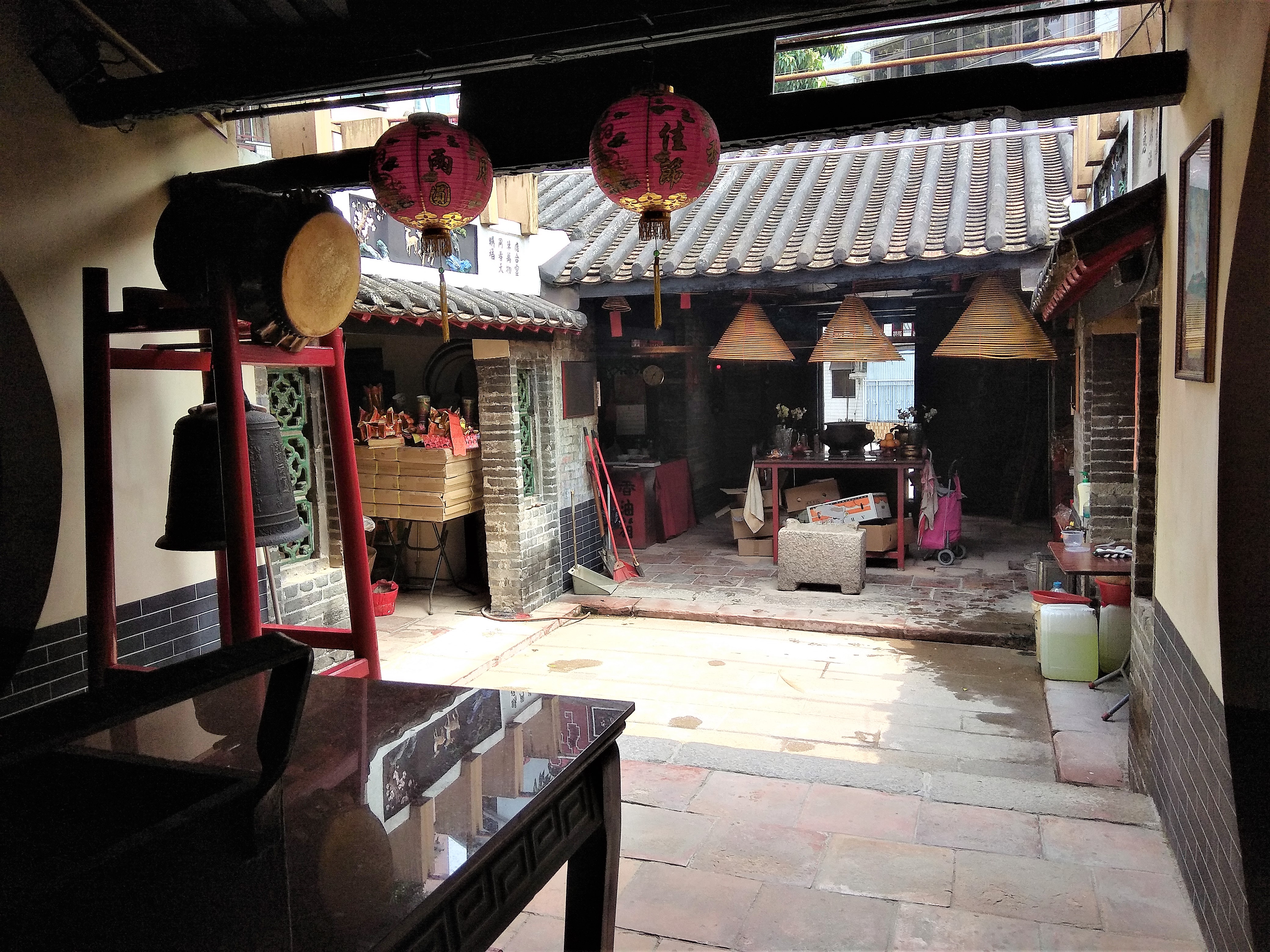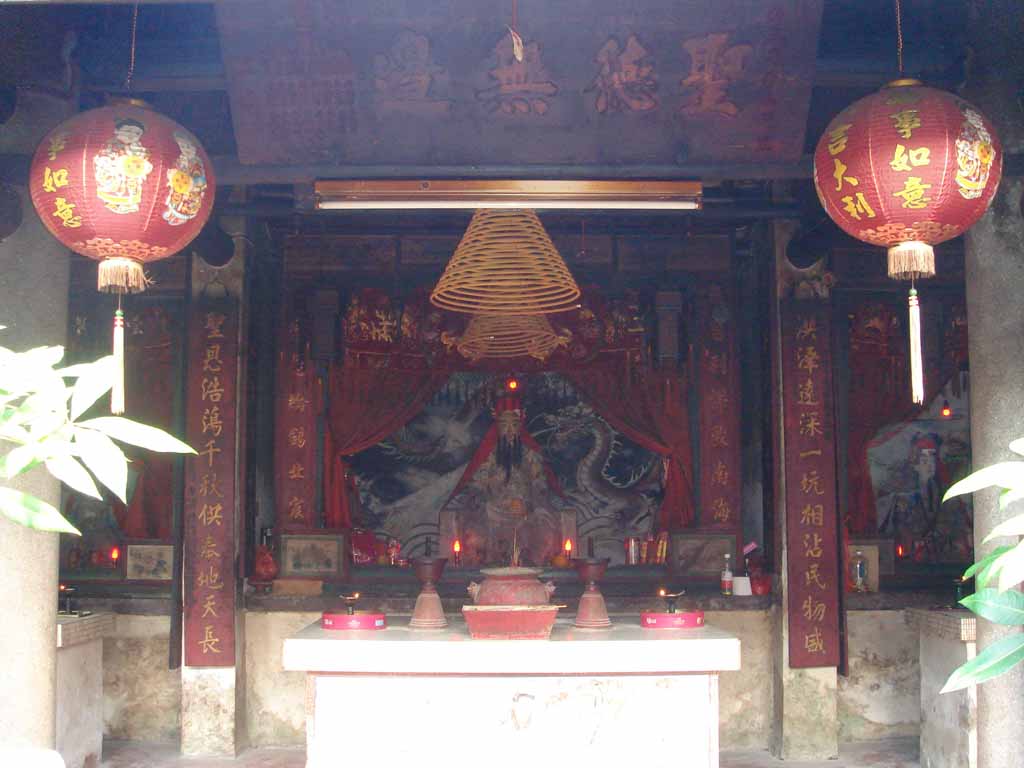|
Tung Tau Wai
Tung Tau Wai () or Wang Chau Tung Tau Wai (), is a village in Wang Chau, Yuen Long District, Hong Kong. Administration Tung Tau Wai (referred to as 'Tung Tau Tsuen' in this context) is a recognized village under the New Territories Small House Policy. Tung Tau Wai is one of the 37 villages represented within the Ping Shan Rural Committee. For electoral purposes, Tung Tau Wai is part of the Ping Shan North constituency. Features I Shing Temple or I Shing Kung () is a temple in Tung Tau Wai. Built in 1718, it is dedicated to Hung Shing and Che Kung. It was declared a monument in 1996. Yu Yuen () is the largest house in Tung Tau Wai. Built in 1927 as a summer villa by Tsoi Po-tin () (1872-1944), a businessman born in the village, it was the private residence of the Tsoi family until 1990. The building was featured in the 1984 film ''Hong Kong 1941''. It is listed as a Grade II historic building.Antiquities Advisory Board The Antiquities Advisory Board (AAB) is a statut ... [...More Info...] [...Related Items...] OR: [Wikipedia] [Google] [Baidu] |
HK IShingTemple WangChau
Hong Kong ( (US) or (UK); , ), officially the Hong Kong Special Administrative Region of the People's Republic of China ( abbr. Hong Kong SAR or HKSAR), is a city and special administrative region of China on the eastern Pearl River Delta in South China. With 7.5 million residents of various nationalities in a territory, Hong Kong is one of the most densely populated places in the world. Hong Kong is also a major global financial centre and one of the most developed cities in the world. Hong Kong was established as a colony of the British Empire after the Qing Empire ceded Hong Kong Island from Xin'an County at the end of the First Opium War in 1841 then again in 1842.. The colony expanded to the Kowloon Peninsula in 1860 after the Second Opium War and was further extended when Britain obtained a 99-year lease of the New Territories in 1898... British Hong Kong was occupied by Imperial Japan from 1941 to 1945 during World War II; British administration resumed ... [...More Info...] [...Related Items...] OR: [Wikipedia] [Google] [Baidu] |
I Shing Temple
I Shing Temple or I Shing Kung () is a temple in Tung Tau Wai, Wang Chau, Yuen Long District, Hong Kong. It is dedicated to Hung Shing and Che Kung. History The temple was built in 1718 by the residents of six villages of Wang Chau: Sai Tau Wai, Tung Tau Wai, Lam Uk Tsuen, Chung Sum Wai, Fuk Hing Tsuen and Yeung Uk Tsuen. Conservation A full restoration of the temple was undertaken by the Architectural Services Department The Architectural Services Department is a department of the Government of Hong Kong responsible for the design and construction of many public facilities throughout the territory. It is subordinate to the Works Branch of the Development Bu ... in 1996. It was declared a monument the same year. References External links I Shing Temple on The Temple Trail website Taoist temples in Hong Kong Declared monuments of Hong Kong Wang Chau (Yuen Long) Religious buildings and structures completed in 1718 {{tao-stub ... [...More Info...] [...Related Items...] OR: [Wikipedia] [Google] [Baidu] |
Heritage Conservation In Hong Kong
This article details the history and status of Heritage conservation in Hong Kong, as well as the role of various stakeholders. An indication of the size of the built heritage in Hong Kong is given by a territory-wide survey conducted by the Antiquities and Monuments Office (AMO) between 1996 and 2000, which recorded some 8,800 buildings. The preservation of Intangible Cultural Heritage is also an emerging theme. Government agencies and legislation In alphabetical order: * Antiquities Advisory Board (AAB) * Antiquities and Monuments Office * Antiquities and Monuments Ordinance * Commissioner for Heritage's Office (CHO), set up on 25 April 2008 under the Development Bureau * Hong Kong Government's Central Conservation Section * Urban Renewal Authority Historic buildings As of 20 May 2016, there were 114 declared monuments in Hong Kong, and as of February 2013, there were 917 graded historic buildings (153 Grade I, 322 Grade II, 442 Grade III), of which 203 were owned by the Gover ... [...More Info...] [...Related Items...] OR: [Wikipedia] [Google] [Baidu] |
Antiquities Advisory Board
The Antiquities Advisory Board (AAB) is a statutory body of the Hong Kong Special Administrative Region with the responsibility of advising the Antiquities Authority on any matters relating to antiquities and monuments. The AAB was established in 1976 along with the Antiquities and Monuments Office (AMO) when the Antiquities and Monuments Ordinance (Cap. 53) was enacted, and comprises members appointed by the Chief Executive. The corresponding governmental ministry is the Development Bureau, and executive support for the AAB is provided by the AMO which is under the Development Bureau. Formation The Antiquities and Monuments Ordinance (Cap. 53) was passed in 1971. However, the Ordinance was not "give life" and the AAB was not constituted until February of 1977. According to section 17 of the Antiquities and Monuments Ordinance (Cap. 53), the AAB consists of members the Chief Executive may appoint, with one being appointed Chairman by the Chief Executive. The Ordinance does n ... [...More Info...] [...Related Items...] OR: [Wikipedia] [Google] [Baidu] |
Hong Kong 1941
''Hong Kong 1941'' () is a 1984 Hong Kong war drama film directed by Po-Chih Leong, produced by John Shum and written by Sammo Hung. The film stars Chow Yun-fat, Cecilia Yip and Alex Man. For his performance in this film, Chow was awarded his first Golden Horse Award for Best Leading Actor. Synopsis The film takes places shortly before and during the Japanese occupation of Hong Kong during World War II. The story of three young friends focuses on their sufferings as Hong Kong falls under oppressive occupation. Years later, a woman narrates her personal story of the Japanese takeover of Hong Kong in 1941. She's Nam, young, attractive, daughter of a wealthy rice merchant, and prey to painful, disabling seizures. Her boyhood friend is Coolie Keung, whose family used to have wealth; he's now impoverished, a tough kid, a leader, in love with her. Into the mix steps Fei, cool and resourceful, an actor from the north, intent on getting to Gold Mountain in the US or Australia. They form ... [...More Info...] [...Related Items...] OR: [Wikipedia] [Google] [Baidu] |
Antiquities And Monuments Office
The Antiquities and Monuments Office (AMO) was established in 1976 under the Antiquities and Monuments Ordinance to protect and preserve Hong Kong's historic monuments. Housed in the Former Kowloon British School, the AMO is responsible for identifying, recording and researching buildings and items of historical interest, as well as organising and coordinating surveys and archaeological excavation, excavations in areas of archaeological significance. The Commissioner for Heritage's Office under the Development Bureau of the Government of Hong Kong, Hong Kong government currently manages the Office. Relationship with other government agencies The AMO is the executive arm of the Antiquities Authority, a portfolio of the Secretary for Development. The AMO also offers secretarial and executive assistance to the Antiquities Advisory Board (AAB) and executes the advice made by the AAB, including the execution of the Chief Executive's decision to declare Declared monuments of Hong Ko ... [...More Info...] [...Related Items...] OR: [Wikipedia] [Google] [Baidu] |
Declared Monuments Of Hong Kong
Declared monuments of Hong Kong are places, structures or buildings legally declared to receive the highest level of protection. In Hong Kong, declaring a monument requires consulting the Antiquities Advisory Board, the approval of the Chief Executive of Hong Kong as well as the publication of the notice on the ''Hong Kong Government Gazette''. As of February 2013, there were 101 declared monuments, of which 57 were owned by the Government and the remaining 44 by private bodies.Report No. 60 of the Director of AuditChapter 1: "Conservation of monuments and historic buildings" 28 March 2013. As of 10 March 2022, there were 132 declared monuments in Hong Kong, with 56 listed on Hong Kong Island, 53 on New Territories, 14 on Kowloon, and 9 on the Outlying Islands. Under Antiquities and Monuments Ordinance, some other buildings are classified as Grades I, II and III historic buildings, and are not listed below. Monument declaration and historic buildings grading system There wa ... [...More Info...] [...Related Items...] OR: [Wikipedia] [Google] [Baidu] |
Che Kung
Che Kung () (02 January, 1235-30 December, 1330), also known as Che Da Yuan Shuai (), was originally a military commander of Southern Song Dynasty (1127–1279), who, according to lore, had supreme power to suppress rebellion and was renowned for his loyalty to the Emperor.Brief Information on Proposed Grade II Items. pp656-657 He was also famous for his power to suppress plagues and his skill in medicine.Brief Information on Proposed Grade I Items. pp67-68 He is believed by some worshipers to have been involve ... [...More Info...] [...Related Items...] OR: [Wikipedia] [Google] [Baidu] |
Hung Shing
Hung Shing wong (), also known as Hung Shing Ye () and Tai Wong () is a Chinese folk religion deity. The most popular tale states that in his lifetime he was a government official in the Tang dynasty (AD 618–907)Brief Information on Proposed Grade I Items, pp.207-208 named Hung Hei () serving in present-day , . [...More Info...] [...Related Items...] OR: [Wikipedia] [Google] [Baidu] |
Ping Shan North (constituency)
Ping Shan North () is one of the 39 constituencies in the Yuen Long District of Hong Kong. The constituency returns one district councillor to the Yuen Long District Council, with an election every four years. Ping Shan North constituency is loosely based on northern part of Ping Shan Ping Shan () is an area in the New Territories, Hong Kong. It is located west of Yuen Long Town and Shui Pin Wai, and south of Tin Shui Wai. Administratively, it is part of the Yuen Long District. Geography Although sandwiched between Yuen L ... with estimated population of 14,237. Councillors represented Election results 2010s References {{Yuen Long District Council Constituencies Ping Shan Constituencies of Hong Kong Constituencies of Yuen Long District Council 1991 establishments in Hong Kong Constituencies established in 1991 ... [...More Info...] [...Related Items...] OR: [Wikipedia] [Google] [Baidu] |
HK WangChau TungTauWai YuYuen
Hong Kong ( (US) or (UK); , ), officially the Hong Kong Special Administrative Region of the People's Republic of China (abbr. Hong Kong SAR or HKSAR), is a city and special administrative region of China on the eastern Pearl River Delta in South China. With 7.5 million residents of various nationalities in a territory, Hong Kong is one of the most densely populated places in the world. Hong Kong is also a major global financial centre and one of the most developed cities in the world. Hong Kong was established as a colony of the British Empire after the Qing Empire ceded Hong Kong Island from Xin'an County at the end of the First Opium War in 1841 then again in 1842.. The colony expanded to the Kowloon Peninsula in 1860 after the Second Opium War and was further extended when Britain obtained a 99-year lease of the New Territories in 1898... British Hong Kong was occupied by Imperial Japan from 1941 to 1945 during World War II; British administration resumed after the ... [...More Info...] [...Related Items...] OR: [Wikipedia] [Google] [Baidu] |




